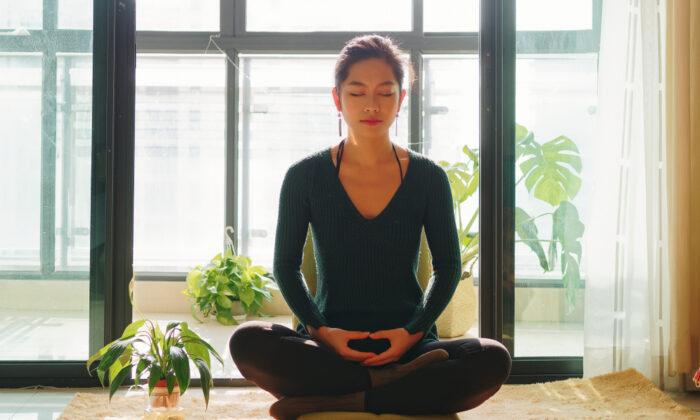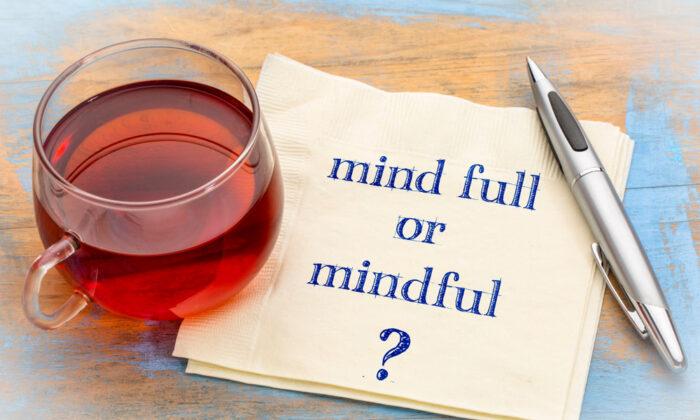Diana Winston, Director of Mindfulness Education at MARC UCLA, offers a meditation podcast on the theme, The Balance of Compassion and Equanimity. This is one of the weekly meditations provided by the Mindful Awareness Research Centre (MARC). Currently, the meditations are offered via the Zoom platform and are recorded and uploaded for ongoing access. They are also readily available via the UCLA Mindful app which provides “meditations for well-being”.
Guided meditation on balancing compassion with equanimity
In these challenging times, it is easy to experience “compassion fatigue” or burnout. The pandemic alone has brought death and grief, pain and suffering, job losses, homelessness, suicides, mental illness, business rundown/closure, family separations and divided communities (around issues such as border closures, vaccination distribution, mask wearing and mandatory vaccination). Many places are experiencing natural disasters, including earthquakes, wildfires, floods and tornados. There are international conflicts creating an endless stream of refugees and people who are trapped in a violent and inhuman environment. We do not have look too far to be surrounded by pain and suffering in this world of conflict and challenge.In her guided meditation, Diana maintains that in these times, it is common for people to experience a lack of balance and overwhelm. She suggests that one way through the dilemma of finding a balance between compassion and equanimity is to take refuge in meditation. Her recommended meditation practice involves both expression of compassion and a retreat into equanimity. This can be a once-off approach. However, if we are dealing with considerable imbalance and/or overwhelm, we can repeat the process on a regular basis. This will also be necessary if we find ourselves in a state of compassion burnout where we can longer feel for others who are in pain and suffering.
Diana begins the mediation by having us take a few deep breaths to release tension we may feel as a result of experiencing strong feelings of compassion. She suggests we become conscious of our posture and the groundedness provided by our feet on the floor or our body on the ground (if lying down outside in nature). Initially, she encourages us to identify physical points of tension so that we can consciously release them. Diana then progressively moves us through the process of exploring several anchors for our meditation, our breathing (movement in our abdomen or chest), external sounds or some bodily sensation.
Compassion meditation
Diana starts with a focus on compassion and invites us to bring to mind a particular group of people or an individual who we know are in pain and suffering. She suggests we start with something that is not a source of overwhelm (so that we can manage the emotions involved). Diana then encourages us to find some words that enable us to express our compassion towards the chosen group or individual, e.g., “May your suffering be alleviated”. If we can find our own words to express compassion, it will enable us to genuinely feel that we are extending kindness to others.Equanimity meditation
Following the focus on compassion, Diana suggests that we take a form of refuge in equanimity meditation. In this context the retreat to equanimity is achieved by refocusing on our chosen anchor. It might be our breathing or sounds or a particular bodily sensation. I have frequently focused on my fingers joined on my lap during meditation, feeling the warmth, the tingling and the flow of blood and energy. In times when I am waiting or experiencing strong emotions, I can resort to this practice and simultaneously tap into my breathing. The combination of these anchors, joined fingers and breath, are achieved by regular practice, creating the association between them. Each person has their own way of becoming deeply grounded and restoring balance and equanimity.Reflection
Diane calls the meditation practice she facilitated, the “black belt of meditation” it can be extremely difficult to deal with the attendant emotions, achieve balance and restore equanimity. What we are trying to achieve is acceptance of what is, while offering genuine compassion to those who are suffering. There are so many things that are outside our control that acceptance, along with taking compassionate action where possible, is the way forward. As mentioned earlier, a “rinse and repeat” process may be required to achieve a consistent level of equanimity.Allyson Pimentel, another MARC meditation teacher, offers an alternative guided meditation on focusing on the elements of nature to achieve equanimity, calmness can be achieved by connecting with the elements of earth, water, fire, air and space. Martin Brensilver, in a different MARC meditation, maintains that equanimity can also be strengthened by widening our perspective, reducing our focus on evaluative thinking (e.g., resorting to absolutes of right and wrong) and intensifying our sensory experience (which increases our groundedness). Gratitude meditation can also help us restore our balance and calmness.
As we grow in mindfulness through alternating compassion and equanimity meditation practice, we can progressively gain emotional regulation, develop a balanced compassion and experience equanimity and the ease of wellness. We can also find creative ways to provide compassionate action for others who are experiencing pain and suffering. Meditation and mindfulness practices enable us to access the deep well within ourself to provide strength and support to others.





